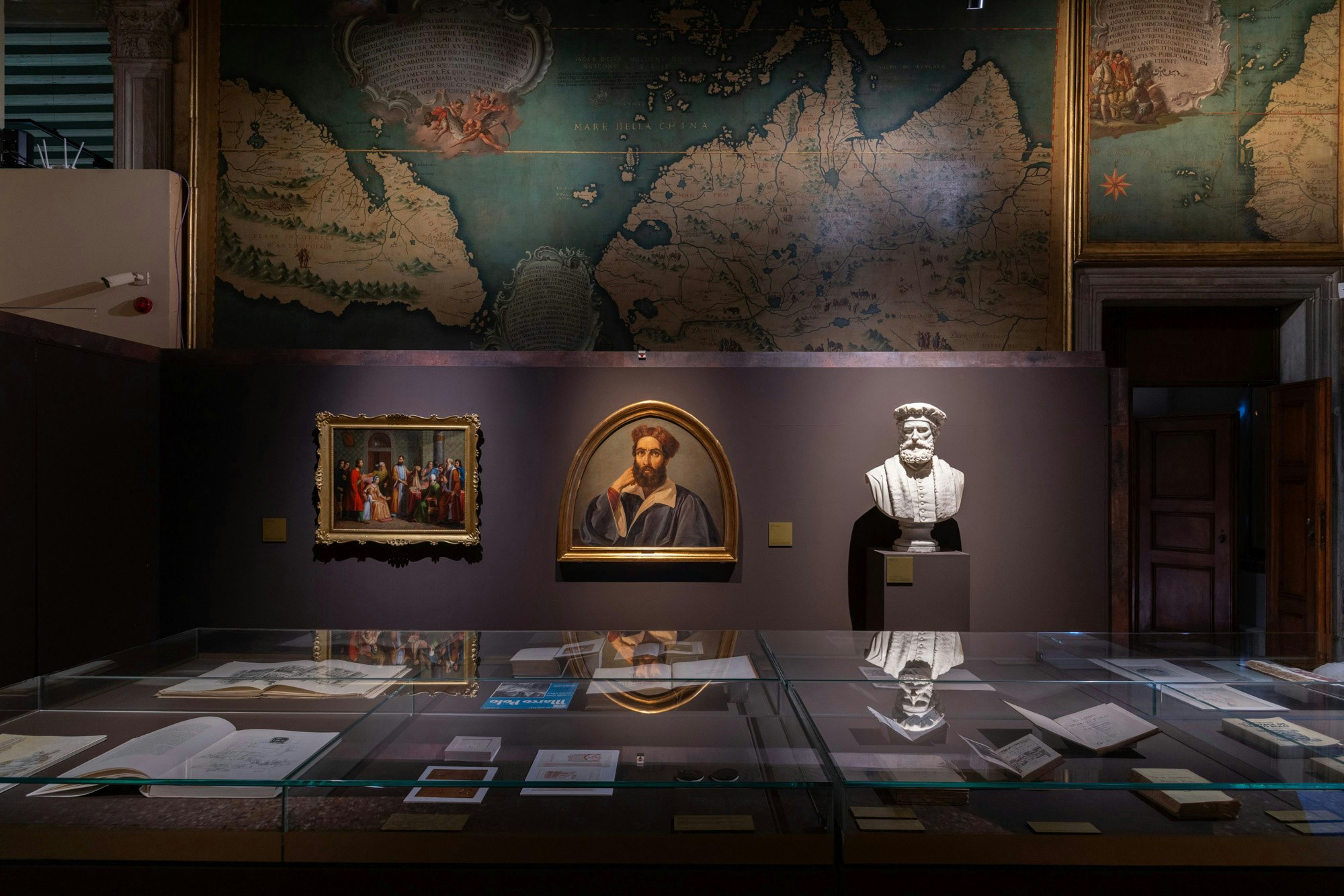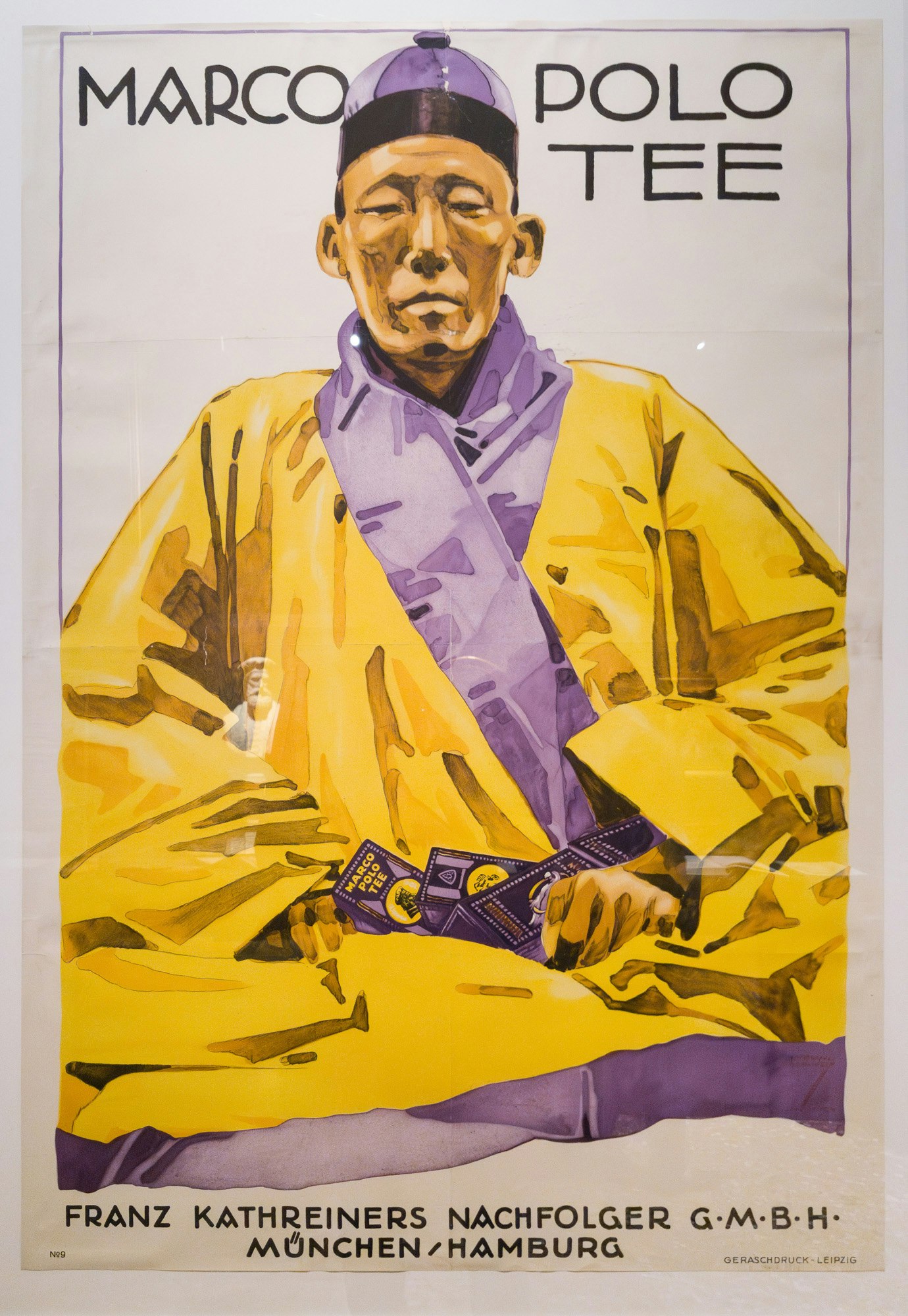The Worlds of Marco Polo: The Journey of a Thirteenth-Century Venetian Merchant; Palazzo Ducale, Venice
For millennia all that was rare, exquisite, gorgeous and strange traversed the “Silk Road”
This article is taken from the August-September 2024 issue of The Critic. To get the full magazine why not subscribe? Right now we’re offering five issues for just £10.
In 1298, the world’s most famous Venetian was a prisoner of war in Genoa. Twenty-seven years earlier, the teenaged Marco Polo had left Venice on what was to become a 15,000-mile journey which lasted almost a quarter of a century, during which he served as an emissary for Kublai Khan in China, Persia and Indonesia.
Polo had a serious thirst for adventure: returning home as a rich and respected merchant, he promptly set about equipping a ship to join the Venetian Republic’s war against the Genovese, only to be captured off the Anatolian coast and shipped back to Italy. He passed his time in prison dictating an account of his travels to a fellow captive, Rustichello da Pisa, who wrote it all down in Franco-Venetian.
The resulting text, originally titled Description of the World, provided the most comprehensive account to date by a westerner of the wonders of the Silk Road and the first evidence available to Europeans of the existence of such innovations as gunpowder, porcelain and paper money.

Commemorating the seven hundredth anniversary of Polo’s death, the present show at Palazzo Ducale attempts to map and investigate the significance of Polo’s legacy through a series of objects and images which track his progress through an unknown world.
Throughout, it emphasises the links between Polo’s legendary journey and his home city, though it can never quite bear to acknowledge that in comparison with those he visited, Venice was very much the junior civilisation. Lord Curzon observed that the Registan of Samarkand “was originally and is still … the noblest public square in the world. I know nothing in the East approaching it in its massive simplicity and grandeur and nothing in Europe, save perhaps, on a humble scale, the Piazza di San Marco at Venice, which can even aspire to enter the competition.”
Polo left Venice in 1271, with his father and uncle (whom he met for the first time when they returned from an earlier voyage in 1269), arriving first at Acre, where they were hosted by Archdeacon Teobaldo Visconti. It was exceptionally lucky timing, as after a 33-month deadlock, the papal conclave elected Visconti as Pope, and the Polos’ friend duly provided official letters for presentation to the Great Khan, whose court was to be their final destination.

Winter melons and golden peaches, pears, pomegranates, plums and walnuts, jasmine and frankincense, cinnamon and star anise, ostriches, tigers, peacocks, rhinoceros horn and walrus tusk, amber, lapis lazuli, turquoise, rubies, peonies and roses, musk, dwarves, tobacco, indigo eyeshadow, jade as pure as crystallised moonlight and fabrics fine as woven wind — the “Silk Road” may be a nineteenth-century term, but for millennia all that was rare, exquisite, gorgeous and strange traversed its ways.
Given that fact, the exhibition gets off to a surprisingly unpromising start, with a few dutiful vitrines of dusty cloves and peppercorns and a series of extremely feeble Zoran Mušič tapestries, but once the didactic hurdle is cleared, there are indeed marvels to behold.
From Acre Polo’s journey passed through eastern Turkey, “Zorzania” (Georgia) and the then kingdom of Cilicia Armenia. The Armenian room showcases the extraordinary sophistication of a culture almost entirely ignored by Western Europe, with illuminated manuscripts and figurative ceramics from the twelfth century, studded Yerevan glass goblets and an extraordinarily vital 1301 bas-relief of Prince Amir Hasan hunting from the monastery of Spitakavor.

Tensely dynamic, the carving achieves a haunting mobility whose rigour contrasts with the room’s other star, a 1332 Gospel from Crimea, as lavish as it is luminous. Polo’s own account tends towards the practical; his beady merchant’s eye was more alert to the prices of flour and salt than artworks, but he was apparently delighted by the Armenian relish for feasting.
The next room considers the influence of the Mongol Empire on the diffusion and influence of Chinese and Central Asian art. From the early thirteenth century, the “Pax Mongolia” imposed by the Great Khans inaugurated a period of exceptional cultural and commercial exchange within the vast trading zone policed by the warriors of the steppe, which at its height stretched from Lithuania to Vietnam.
Methods and images, such as the iconographic motifs of Chinese art — the dragon, phoenix, lotus, peony and chi chi cloud which permanently entered the decorative repertoire of Islam — migrated along the Silk Road. Their agents are embodied in a thirteenth-century Persian ceramic of a Mongolian soldier in a squashy turnip hat, rendered in “frit” (artificial siliceous paste) and metallic lustre.

An early fourteenth century ink miniature from the Persian history book the Jami’ al-Tawarikh prefigures the axial perspective introduced in Europe by Brunelleschi and Giotto, but aside from the technique, it’s the fresh alertness of the figures’ gaze which compel the eye. Pairing this with Niccolo di Pierro’s fifteenth-century Arrival of the Magi is the most thoughtful piece of curation in the show. It’s a fascinating hotchpotch of a picture, much overlooked in its usual home at the Accademia gallery, encapsulating the collision of methods and subjects Polo himself encountered.
A dervish crouches in the foreground, the Magi are multiracial, the startling facial detail might have come from Persia, the Mannerist horses and dogs mimic the etiolated lines of Tang frescoes. It might be a diagram of how the East galvanized a tradition which was still seeking a visual language through which to correlate the ineffable divine and the miraculous.
Polo was not the first gemuren or “man with coloured eyes” to visit the courts of the Khan. The papal legate Giovanni di Pian del Carmine did so in 1246 and the Flemish missionary William of Rubruck in 1254, and whilst the Polo-centric labelling neglects to mention this, it does concur with Rubruck’s dismissal of the Mongols as “barbarians”.

Commenting on the decline of Chinese porcelain under the nomadic conquerors, the exhibition labels suggest that the Mongol elites just couldn’t appreciate it, as they “preferred to drink alcoholic beverages in gold cups rather than tea in refined ceremonies”. This notice is displayed next to a white porcelain hexalobed bowl with a shadowy floral motif from the Mongol period which alone could make one weep for the beauty that mass production has leached from the world.
At its best then, the direction of The Worlds of Marco Polo is worthy, if unimaginative, at its worst, dismally parochial. The present and much-loathed mayor of Venice is often pleased to compare himself to Polo and the show reflects his view that the traveller was a thrusting, visionary entrepreneur who showed those foreigners how to manage their unacknowledged riches.
The penultimate room displays the banknotes, weights, stamps and coins whose power and efficiency so fascinated Polo. Humming with tactility, with the passing of centuries of human hands, they are as arresting as the splendid seated tiger in the Korean room or the illustrated Burmese tiles depicting scenes from the Tittha Jafaka which one can imagine flickering to life in candlelight in the manner of tapestries.

These Mongol stamps, which resemble modern QR codes, were the prototype for European banknotes, of which one, the 1000-lire note featuring a portrait of Polo, is displayed in the last room. The depiction however, was a fake, as there is no extant image or description of the man himself.
Polo may have evaporated into the Venetian mists, but the pieces assembled here are an enchanting introduction to the thrilling world he described.
Enjoying The Critic online? It's even better in print
Try five issues of Britain’s most civilised magazine for £10
Subscribe














